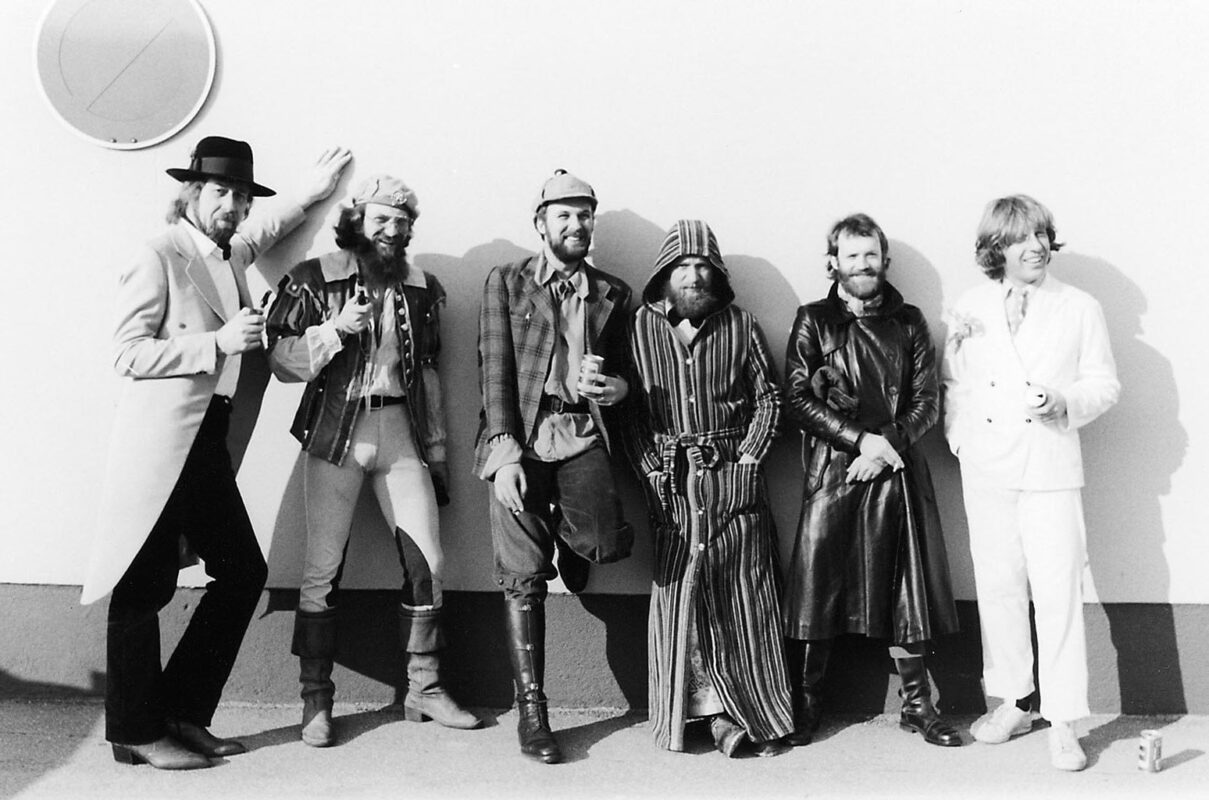Pop/Hip Hop/R&B
10 Best Jethro Tull Songs of All Time
Few bands in rock history have blended the mystical with the musical quite like Jethro Tull. With Ian Anderson’s unmistakable flute, poetic lyrics, and theatrical stage presence, the band carved out a niche entirely their own—where progressive rock meets British folklore, classical finesse, and hard-hitting social commentary. From sprawling concept albums to radio-ready anthems, Jethro Tull’s catalog is as diverse as it is daring. Whether you’re a long-time fan or a curious newcomer, exploring their music is like stepping into a world where every song tells a story, every riff has purpose, and every flute solo is a burst of character.
In this list, we dive into the Top 10 Most Popular Jethro Tull Songs of All Time—tracks that defined their legacy, captured imaginations, and stood the test of decades. These aren’t just fan favorites; they’re cultural milestones that helped reshape what rock music could be. From the haunting grit of Aqualung to the whimsical satire of Thick as a Brick, each song offers a glimpse into the genius that made Jethro Tull an enduring force in music history. Turn up the volume and prepare to be transported—this is Jethro Tull at their very best.
1. Aqualung (1971)
Possibly Jethro Tull’s most recognized song, “Aqualung” opens the 1971 album of the same name with a gritty portrayal of a down-and-out drifter. Ian Anderson’s raw vocals and Martin Barre’s legendary guitar riff create an emotionally charged portrait of alienation. The track morphs from acoustic introspection to electric fury, reflecting the duality of its subject’s life. What makes “Aqualung” unforgettable isn’t just its musical power, but its social commentary—unflinching and uncomfortable. It’s the sound of a band pushing the limits of rock with intelligence and soul. The song’s structure, which seemingly splits into two distinct halves, was ahead of its time and remains a masterclass in dynamics.
2. Locomotive Breath (1971)
“Locomotive Breath” chugs to life with a haunting piano intro before erupting into a full-throttle rock anthem. Released on Aqualung in 1971, it’s a metaphorical powerhouse—Anderson compares life’s uncontrollable momentum to a speeding train. Barre’s guitar work is fierce, and the rhythm section drives the track with relentless energy. The lyrics paint a bleak picture of a man losing control, both personally and existentially. One of the band’s most enduring live staples, it showcases Tull’s ability to blend storytelling, social critique, and progressive rock into something that feels both timeless and urgent.
3. Thick as a Brick (Part 1) (1972)
“Thick as a Brick” isn’t just a song—it’s an experience. Released in 1972 as a single continuous track spanning an entire album, Part 1 captures the first half of this audacious musical odyssey. Framed as a satire of concept albums, it ironically became one of the greatest in the genre. With whimsical lyrics supposedly penned by fictional child prodigy Gerald Bostock, the song weaves through shifting time signatures, folk passages, and explosive rock sections. Anderson’s flute dances through the mix, and the band’s technical prowess is on full display. It’s a brilliant mix of complexity and British wit, inviting listeners to laugh, think, and marvel.
4. Bungle in the Jungle (1974)
A standout from the 1974 album War Child, “Bungle in the Jungle” is Jethro Tull’s most radio-friendly hit, reaching the U.S. Top 20. With its lush orchestration and catchy chorus, the song uses animal metaphors to reflect on human society’s chaos and competitiveness. The string arrangements add a cinematic flair, while Anderson’s lyrical playfulness keeps it engaging. Though lighter in tone than their usual fare, it’s no less clever. “Bungle” captures the band at a moment where accessibility met artistic integrity, proving that progressive rock could still conquer the airwaves without sacrificing depth.
5. Skating Away on the Thin Ice of the New Day (1974)
Delicate yet dynamic, “Skating Away on the Thin Ice of the New Day” encapsulates the uncertainty and promise of new beginnings. Originally conceived during the Aqualung sessions, it found its home on War Child in 1974. Opening with acoustic guitar and layered vocal textures, the song gradually builds into a full-band arrangement. The lyrics are a poetic meditation on change—personal, societal, and spiritual. It’s one of Anderson’s most hopeful compositions, offering listeners a moment of clarity amid chaos. The slow crescendo mirrors the emotional arc perfectly, showcasing Jethro Tull’s finesse in musical storytelling.
6. Living in the Past (1969)
Released in 1969, “Living in the Past” is instantly recognizable by its unusual 5/4 time signature—a bold move that paid off handsomely. The song became an early hit for Jethro Tull, marking them as innovators from the start. With a jazzy swing and a lightly mocking tone, it critiques nostalgia and the refusal to move forward. Anderson’s flute is front and center, dancing mischievously over a tight rhythm section. It’s deceptively simple, yet structurally complex—a testament to the band’s early mastery. Even decades later, it remains fresh, clever, and rhythmically riveting.
7. Songs from the Wood (1977)
With “Songs from the Wood,” Jethro Tull embraced their love for British folklore and nature with open arms. Released in 1977 on the album of the same name, the track blends medieval motifs with progressive rock in a seamless, joyous celebration. The layered harmonies and intricate acoustic guitar work create a pastoral soundscape, while the lyrics invite listeners to find wonder in the natural world. It’s a track brimming with warmth and vitality, merging the ancient with the modern. This song marked a turning point for the band, ushering in their celebrated folk-rock era with confidence and craft.
8. Cross-Eyed Mary (1971)
Bold, dark, and theatrical, “Cross-Eyed Mary” is another gem from Aqualung (1971), offering a companion narrative to the title track. It tells the tale of a schoolgirl-turned-streetwalker with biting sarcasm and unsettling empathy. Musically, it opens with a haunting flute melody that bursts into a muscular, riff-heavy groove. The contrast between the beauty of the instrumentation and the grittiness of the subject matter is quintessential Jethro Tull. Anderson’s vocals are biting, theatrical, and laden with irony. It’s a track that challenges listeners to confront uncomfortable truths, all while delivering a captivating musical performance.
9. My God (1971)
“My God,” also from Aqualung, is a thunderous indictment of organized religion, delivered with uncompromising force. Opening with a mournful acoustic guitar, the song erupts into an intense, almost ecclesiastical rock movement. The flute solo, distorted and furious, is among Anderson’s most memorable. Lyrically, it’s searing—questioning authority, hypocrisy, and blind faith with poetic venom. It’s one of the most controversial songs in their catalog, but also one of the most powerful. Jethro Tull here wields their music as both art and protest, making “My God” a defining moment in their career.
10. Minstrel in the Gallery (1975)
“Minstrel in the Gallery” opens Jethro Tull’s 1975 album with an elegant blend of baroque acoustics and hard rock dynamics. It begins with a gentle, courtly melody before shifting into thunderous electric territory—symbolizing the contrast between performer and audience, authenticity and spectacle. Anderson plays the role of the misunderstood artist, critiquing both himself and the expectations of fame. The arrangement is intricate and theatrical, showcasing the band’s ability to fuse classical influences with progressive rock bravado. It’s a brilliant, often overlooked track that captures the complexity of Tull’s mid-70s evolution.
Source link


